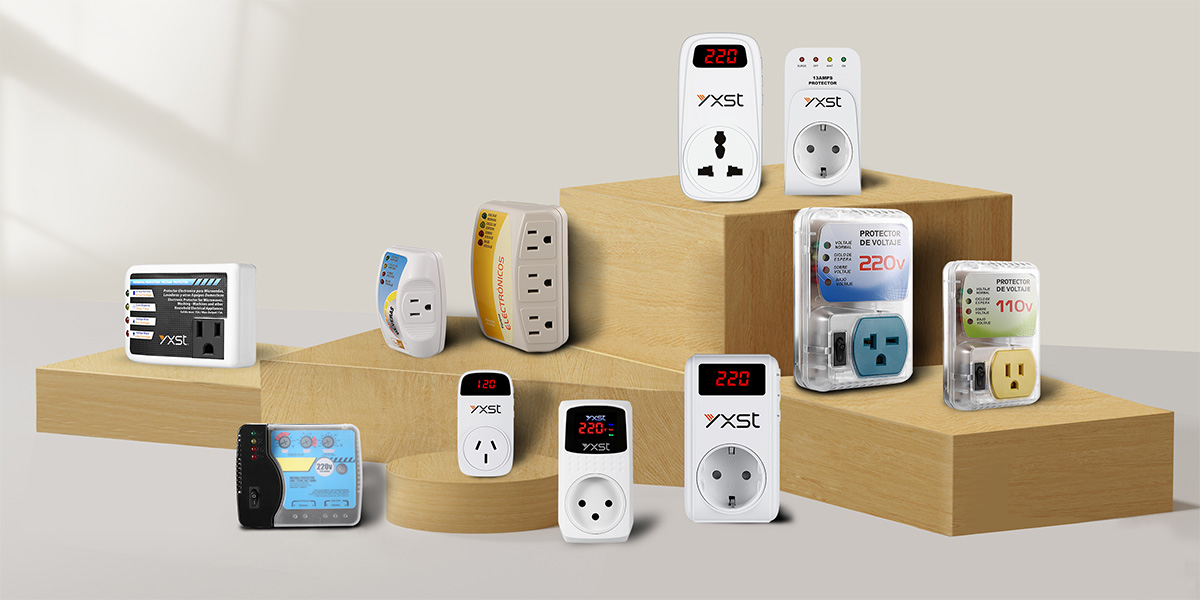High and low voltage protector manufacturers will give you an in-depth understanding of the differences between high-voltage protectors and low-voltage protectors, their respective characteristics, uses, and working principles.
High Voltage Protector
A High Voltage Protector (often referred to as a High Voltage Cutoff or Over Voltage Protector) is designed to protect your appliances from voltage spikes or surges that exceed the normal operating range. High and low voltage protector manufacturers tell you,when the voltage rises above a preset threshold, the protector disconnects the power supply to prevent damage.
Key Features of High Voltage Protectors:
Voltage Threshold Setting: Most high voltage protectors have a preset threshold, typically around 250V to 280V for devices designed for 220V-240V systems. This means if the voltage exceeds this range, the protector will cut off the power supply to your equipment.
Automatic Reset: After the high voltage condition subsides, the protector may automatically reconnect the power to your devices, depending on the model.
Response Time: High voltage protectors generally act very quickly when they detect a surge, usually within milliseconds.
Use Cases:
Protecting sensitive electronics such as computers, television sets, air conditioners, and home appliances from power surges.
Common in areas where power surges are frequent due to lightning storms, grid instability, or equipment failure.
How It Works:
The protector detects when the incoming voltage exceeds the safe limit.
Once it exceeds the set threshold, the protector will open a relay or circuit breaker that disconnects the supply.
Some devices may have a reset button or an automatic reset feature to restore power once the voltage returns to normal levels.
Low Voltage Protector
A Low Voltage Protector (also known as Under Voltage Protector) is designed to protect devices from damage caused by low voltage conditions, also known as voltage dips or brownouts.High and low voltage protector manufacturers tell you,this happens when the voltage drops below a safe level for your equipment to operate properly. The protector disconnects power to prevent the appliances from malfunctioning.
Key Features of Low Voltage Protectors:
Voltage Threshold Setting: Most low voltage protectors are set to activate if the voltage drops below 180V to 200V for a 220V-240V system. The exact threshold can vary based on the device and region.
Prevents Damage: Many sensitive devices like motors, compressors, and electronic circuits can be damaged or malfunction if operated at low voltages.
Automatic Reconnection: Just like high voltage protectors, many low voltage protectors have an automatic reset feature that restores power once the voltage returns to the normal range.
Time Delay Feature: Some devices include a time delay feature to avoid rapid cycling. This prevents the protector from immediately reconnecting if the voltage fluctuations are temporary.
Use Cases:
Protecting devices like air conditioners, refrigerators, pumps, and other motor-driven equipment from damage during brownouts or power dips.
Ensuring that computers and electronics are not exposed to unstable voltage that could cause malfunction or permanent damage.
How Low Voltage Protector Works:
When the incoming voltage drops below the preset threshold, the protector disconnects the load from the power source.
The device stays off until the voltage returns to a safe level, after which it reconnects automatically or requires a manual reset.

Comparison of High Voltage and Low Voltage Protectors
| Feature | High Voltage Protector | Low Voltage Protector |
|---|---|---|
| Function | Protects against excessive voltage (spikes) | Protects against low voltage (brownouts) |
| Trigger Action | Disconnects when voltage exceeds preset limit | Disconnects when voltage falls below preset limit |
| Voltage Threshold (Typical) | Above 250V for a 220V system | Below 180V for a 220V system |
| Response Time | Milliseconds to disconnect | Milliseconds to disconnect |
| Automatic Reconnection | Yes, when voltage returns to safe level | Yes, when voltage returns to safe level |
| Common Use | Appliances sensitive to high voltage | Appliances sensitive to low voltage |
| Protection Type | Surge or spike protection | Brownout or undervoltage protection |
Why Are These Protectors Important?
Voltage Fluctuations: In areas with unstable power supply, voltage can frequently fluctuate, causing equipment to operate under unsafe conditions.
Appliance Longevity: Both high and low-voltage protectors can significantly extend the life of your appliances by ensuring they are always operating within the manufacturer’s recommended voltage range.
Cost of Repairs: Voltage-related damage is often expensive to repair, especially for sensitive electronics or motors. Using a protector can help save on costly repairs or replacements.
Choosing the Right Protector
High and low voltage protector manufacturers tell you,when selecting a high or low-voltage protector, it’s essential to:
Know the Voltage Range: Ensure that the protector is designed for the voltage specifications of your region and appliances.
Check the Wattage Rating: Make sure the protector can handle the total wattage of the equipment you intend to protect.
Look for Features: Consider if you need an automatic reset, a delay feature, or an indicator light showing when the protector is active or when it has tripped.
Summary
High and low voltage protector manufacturers tell you,High voltage protectors guard against damaging voltage surges, while low voltage protectors prevent the negative effects of voltage dips. Together, they ensure that your sensitive electronics and appliances are shielded from the risks of fluctuating voltage, maintaining their performance and lifespan.




